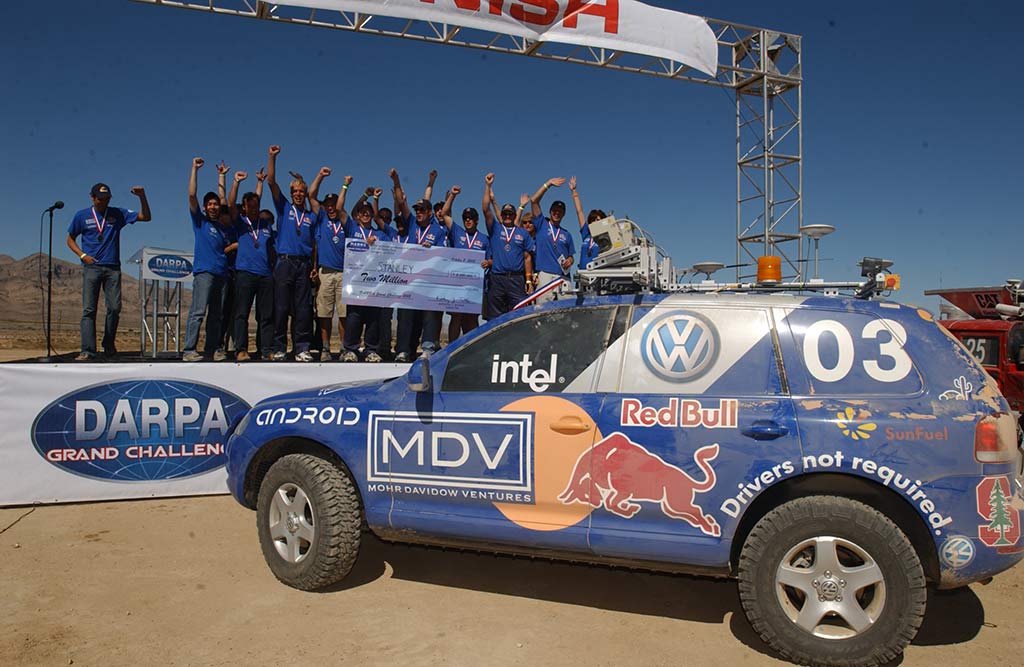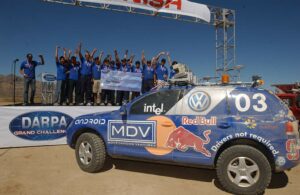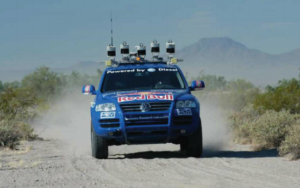
In the realm of autonomous vehicles, where cutting-edge technology meets the open road, few competitions are as prestigious and challenging as the DARPA Grand Challenge. This is the arena where innovation and engineering prowess come to life, and where teams of brilliant minds push the boundaries of self-driving technology. Among these trailblazers is CyberRider, a team of dedicated engineers whose journey from passion to competition in the DARPA Grand Challenge is nothing short of inspiring.
The DARPA Grand Challenge: A Brief Overview
The DARPA Grand Challenge, organized by the Defense Advanced Research Projects Agency (DARPA), made its debut in 2004. Its primary goal was to accelerate the development of autonomous vehicle technology by challenging teams to build vehicles capable of completing a 150-mile course through the harsh desert terrain, relying solely on self-driving capabilities.
As the years passed, the challenge evolved, incorporating urban driving scenarios, complex road conditions, and increasingly demanding requirements. Participating in the DARPA Grand Challenge became a prestigious opportunity for teams to showcase their technological prowess and contribute to the advancement of autonomous driving.
CyberRider: Birthed from Passion
CyberRider’s journey to the DARPA Grand Challenge began with a shared passion for autonomous vehicles. A group of talented engineers and technology enthusiasts came together, driven by the belief that self-driving technology had the potential to revolutionize transportation and improve lives. Their commitment to this vision laid the foundation for CyberRider.
The team was a diverse mix of expertise, including robotics, artificial intelligence, computer vision, and systems engineering. This rich blend of skills and knowledge would prove invaluable as they embarked on their ambitious project.
The Road to the DARPA Grand Challenge

The path to the DARPA Grand Challenge was arduous and filled with challenges that required creative solutions. CyberRider’s engineers had to develop cutting-edge perception systems capable of navigating complex environments, create robust decision-making algorithms, and design precise control mechanisms.
One of the earliest hurdles they faced was sensor integration. The team had to seamlessly integrate various sensors like LiDAR, radar, and cameras into their autonomous vehicle to gather data about its surroundings. This data was then processed in real-time to make split-second driving decisions.
Obstacle detection and avoidance were also paramount. The vehicle had to be programmed to recognize and respond to a wide array of obstacles, from stationary objects to moving vehicles and pedestrians. The algorithms responsible for these tasks had to be both accurate and efficient.
CyberRider’s journey was marked by relentless research, development, and rigorous testing. They pushed the limits of technology to ensure their autonomous vehicle could meet the demanding standards of the DARPA Grand Challenge.
Collaborative Innovation
One of CyberRider’s strengths was its commitment to collaborative innovation. The team actively engaged with academia, industry experts, and fellow enthusiasts in the autonomous vehicle community. These collaborations provided valuable insights, resources, and opportunities to exchange ideas.
By leveraging collective knowledge and expertise, CyberRider accelerated their progress and made significant strides toward their goal of participating in the DARPA Grand Challenge. The power of collaboration was instrumental in overcoming the technical challenges they encountered along the way.
Lessons Learned and Future Prospects
Participating in the DARPA Grand Challenge was an invaluable learning experience for CyberRider. The team faced numerous obstacles, both technical and logistical, which tested their problem-solving skills and resilience. However, with each setback, they gained valuable insights and knowledge that propelled them closer to their ultimate vision.
The lessons learned from their participation in the DARPA Grand Challenge continue to shape CyberRider’s ongoing research and development efforts. They have fine-tuned their algorithms, enhanced sensor capabilities, and explored new avenues for innovation.
The Future of CyberRider
Looking ahead, CyberRider remains committed to pushing the boundaries of autonomous vehicle technology. Their journey to the DARPA Grand Challenge was a significant milestone, but it was just the beginning. The team continues to refine their technology, explore new frontiers, and contribute to the field of self-driving cars.
Their ultimate aim is to make autonomous vehicles safer, more efficient, and accessible to all. They are part of a transformative movement that is redefining the future of transportation and revolutionizing the way we travel.
Conclusion
CyberRider’s story is a testament to the power of passion, innovation, and collaboration in the world of autonomous vehicles. Their journey from a shared vision to competing in the DARPA Grand Challenge exemplifies the spirit of those who dare to dream and are determined to turn those dreams into reality.
As they continue to refine their technology and contribute to the field, CyberRider is poised to play a crucial role in shaping the future of autonomous driving. Their story is a source of inspiration for engineers, innovators, and enthusiasts worldwide who share the vision of a self-driving future.


